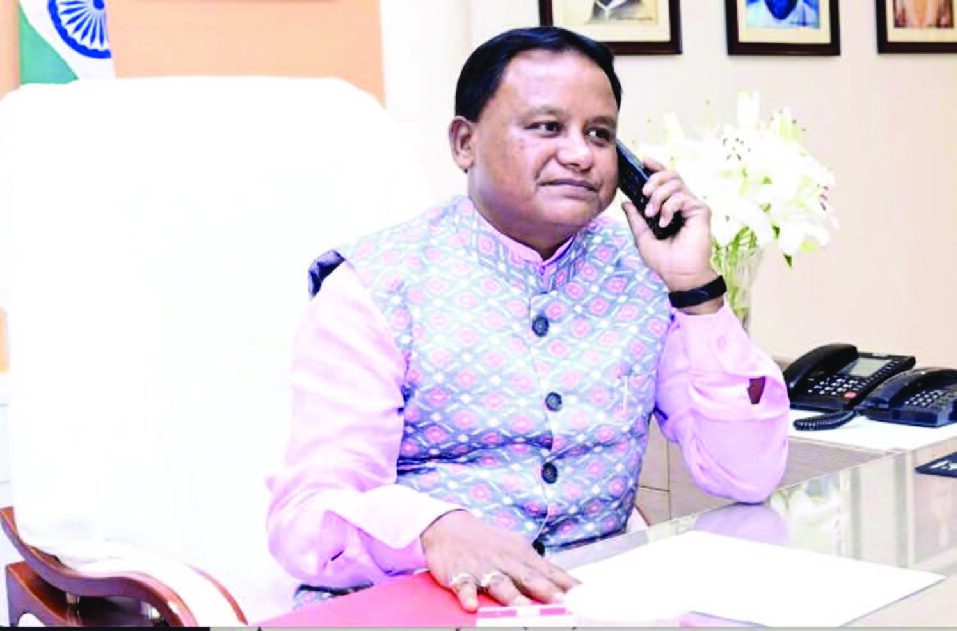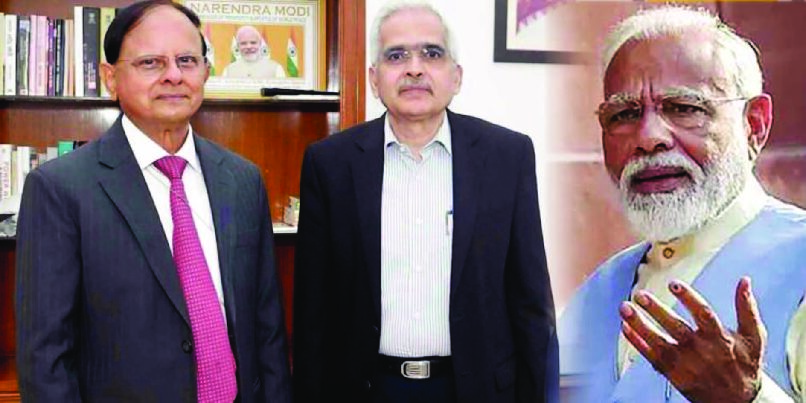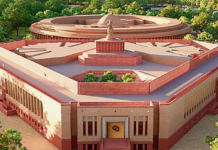- The Fifteenth Finance Commission (XVFC)’s ToR was unique and wide ranging in many ways. The Commission was asked to recommend performance incentives for States in many areas like power sector, adoption of DBT, solid waste management etc.
- Another unique ToR was to recommend funding mechanism for defence and internal security.
- The XVFC’s Report is organised in four volumes.
- Volume I and II, as in the past, contain the main report and the accompanying annexes.
- Volume III is devoted to the Union Government and examines key departments in greater depth, with the medium-term challenges and the roadmap ahead.
- Volume IV is entirely devoted to the States. We have analysed the finances of each State in great depth and have come up with State-specific considerations to address the key challenges that individual States face.
- In total, main report has 117 core recommendations. Vol-III and IV has numerous suggested reforms for the Union ministries and State governments respectively.
Vertical devolution:
- In order to maintain predictability and stability of resources, especially during the pandemic, XVFC has recommended maintaining the vertical devolution at 41 per cent – the same as in our report for 2020-21. It is at the same level of 42 per cent of the divisible pool as recommended by FC-XIV. However, it has made the required adjustment of about 1 per cent due to the changed status of the erstwhile State of Jammu and Kashmir into the new Union Territories of Ladakh and Jammu and Kashmir.
- In XVFC’s assessment, gross tax revenues for 5-year period is expected to be 135.2 lakh crore. Out of that, Divisible pool (after deducting cesses and surcharges & cost of collection) is estimated to be 103 lakh crore.
- States’ share at 41 per cent of divisible pool comes to 42.2 lakh crore for 2021-26 period.
- Including total grants of Rs. 10.33 lakh crore (details later) and tax devolution of Rs. 42.2 lakh crore, aggregate transfers to States is estimated to remain at around 50.9 per cent of the divisible pool during 2021-26 period.
- Total XVFC transfers (devolution + grants) constitutes about 34 per cent of estimated Gross Revenue Receipts of the Union leaving adequate fiscal space for the Union to meet its resource requirements and spending obligations on national development priorities.
Horizontal devolution:
- Based on principles of need, equity and performance, overall devolution formula is as follows.
| Criteria | Weight (%) |
| Population | 15.0 |
| Area | 15.0 |
| Forest & ecology | 10.0 |
| Income distance | 45.0 |
| Tax & fiscal efforts | 2.5 |
| Demographic performance | 12.5 |
| Total | 100 |
- On horizontal devolution, while XVFC agreed that the Census 2011 population data better represents the present need of States, to be fair to, as well as reward, the States which have done better on the demographic front, XVFC has assigned a 12.5 per cent weight to the demographic performance criterion.
- XVFC has re-introduced tax effort criterion to reward fiscal performance.
Revenue deficit grants:
- Based on uniform norms of assessing revenues and expenditure of the States and the Union, XVFC has recommended total revenue deficit grants (RDG) of Rs 2,94,514 crore over the award period for seventeen States.
Local Governments:
- The total size of the grant to local governments should be Rs. 4,36,361 crore for the period 2021-26.
- Of these total grants, Rs. 8,000 crore is performance-based grants for incubation of new cities and Rs. 450 crore is for shared municipal services. A sum of Rs. 2,36,805 crore is earmarked for rural local bodies, Rs.1,21,055 crore for urban local bodies and Rs. 70,051 crore for health grants through local governments.
- Urban local bodies have been categorised into two groups, based on population, and different norms have been used for flow of grants to each, based on their specific needs and aspirations. Basic grants are proposed only for cities/towns having a population of less than a million. For Million-Plus cities, 100 per cent of the grants are performance-linked through the Million-Plus Cities Challenge Fund (MCF).
Health:
- XVFC has recommend that health spending by States should be increased to more than 8 per cent of their budget by 2022.
- Given the inter-State disparity in the availability of medical doctors, it is essential to constitute an All India Medical and Health Service as is envisaged under Section 2A of the All-India Services Act, 1951.
- The total grants-in-aid support to the health sector over the award period works out to Rs. 1,06,606 crore, which is 10.3 per cent of the total grants-in-aid recommended by XVFC. The grants for the health sector will be unconditional.
- XVFC has recommend health grants aggregating to Rs. 70,051 crore for urban health and wellness centres (HWCs), building-less sub centre, PHCs, CHCs, block level public health units, support for diagnostic infrastructure for the primary healthcare activities and conversion of rural sub centres and PHCs to HWCs. These grants will be released to the local governments.
- Out of the remaining grant of Rs. 31,755 crore for the health sector (total of Rs. 1,06,606 crore minus Rs. 70, 051 crore through local bodies and Rs.4800 crore state-specific grants), XVFC has recommended Rs. 15,265 crore for critical care hospitals. This includes Rs. 13,367 crore for general States and Rs 1,898 crore for NEH States.
- XVFC has recommended Rs. 13,296 crore for training of the allied healthcare workforce. Out of this, Rs. 1,986 crore will be for NEH States and Rs. 11,310 crore for general States.
Performance incentives and grants:
- XVFC has recommended grants of Rs. 4,800 crore (Rs. 1,200 crore each year) from 2022-23 to 2025-26 for incentivising the States to enhance educational outcomes.
- XVFC has recommended Rs. 6,143 crore for online learning and development of professional courses (medical and engineering) in regional languages (matribhasha) for higher education in India.
- XVFC has recommended that Rs. 45,000 crore be kept as performance-based incentive for all the States for carrying out agricultural reforms
- for amending their land-related laws on the lines of NITI Aayog’s model law
- incentive-based grants to States that maintain and augment groundwater stock.
- growth in agricultural exports
- production of oilseeds, pulses and wood and wood-based products
- Apart from above, following is the snapshot of grants.
| S.no. | Grant Components | 2021-26 |
| 1 | Revenue Deficit grants | 294514 |
| 2 | Local governments grants | 436361 |
| 3 | Disaster management grants | 122601 |
| 4 | Sector-specific grants | 129987 |
| i | Sectoral grants for Health | 31755 |
| ii | School Education | 4800 |
| iii | Higher Education | 6143 |
| iv | Implementation of agricultural reforms | 45000 |
| v | Maintenance of PMGSY roads | 27539 |
| vi | Judiciary | 10425 |
| vii | Statistics | 1175 |
| viii | Aspirational districts and blocks | 3150 |
| 5 | State-specific | 49599 |
| Total | 1033062 |
Defence and Internal Security
- Keeping in view the extant strategic requirements for national defence in the global context, XVFC has, in its approach, re-calibrated the relative shares of Union and States in gross revenue receipts. This will enable the Union to set aside resources for the special funding mechanism that XVFC has proposed.
- The Union Government may constitute in the Public Account of India, a dedicated non-lapsable fund, Modernisation Fund for Defence and Internal Security (MFDIS). The total indicative size of the proposed MFDIS over the period 2021-26 is Rs. 2,38,354 crore.
Disaster Risk Management:
- Mitigation Funds should be set up at both the national and State levels, in line with the provisions of the Disaster Management Act. The Mitigation Fund should be used for those local level and community-based interventions which reduce risks and promote environment-friendly settlements and livelihood practices.
- For SDRMF, XVFC has recommended the total corpus of Rs.1,60,153 crore for States for disaster management for the duration of 2021-26, of which the Union’s share is Rs. 1,22,601 crore and States’ share is Rs. 37,552 crore.
- XVFC has recommended six earmarked allocations for a total amount of Rs. 11,950 crore for certain priority areas, namely, two under the NDRF (Expansion and Modernisation of Fire Services and Resettlement of Displaced People affected by Erosion) and four under the NDMF (Catalytic Assistance to Twelve Most Drought-prone States, Managing Seismic and Landslide Risks in Ten Hill States, Reducing the Risk of Urban Flooding in Seven Most Populous Cities and Mitigation Measures to Prevent Erosion).
Fiscal consolidation
- Provided range for fiscal deficit and debt path of both the Union and States.
- Additional borrowing room to States based on performance in power sector reforms.
- A threshold amount of annual appropriation should be fixed below which the funding for a CSS may be stopped. Below the stipulated threshold, the administrating department should justify the need for the continuation of the scheme. As the life cycle of ongoing schemes has been made co-terminus with the cycle of Finance Commissions, the third-party evaluation of all CSSs should be completed within a stipulated timeframe. The flow of monitoring information should be regular and should include credible information on output and outcome indicators.
- In view of the uncertainty that prevails at the stage that XVFC have done its analysis, as well as the contemporary realities and challenges, we recognise that the FRBM Act needs a major restructuring and recommend that the time-table for defining and achieving debt sustainability may be examined by a High-powered Inter-governmental Group. This High-powered Group can craft the new FRBM framework and oversee its implementation. It is important that the Union and State Governments amend their FRBM Acts, based on the recommendations of the Group, so as to ensure that their legislations are consistent with the fiscal sustainability framework put in place. This High-powered Inter-Governmental Group could also be tasked to oversee the implementation of the 15th Finance Commission’s diverse recommendations.
- State Governments may explore formation of independent public debt management cells which will chart their borrowing programme efficiently.









































